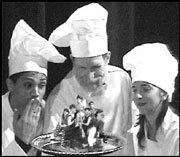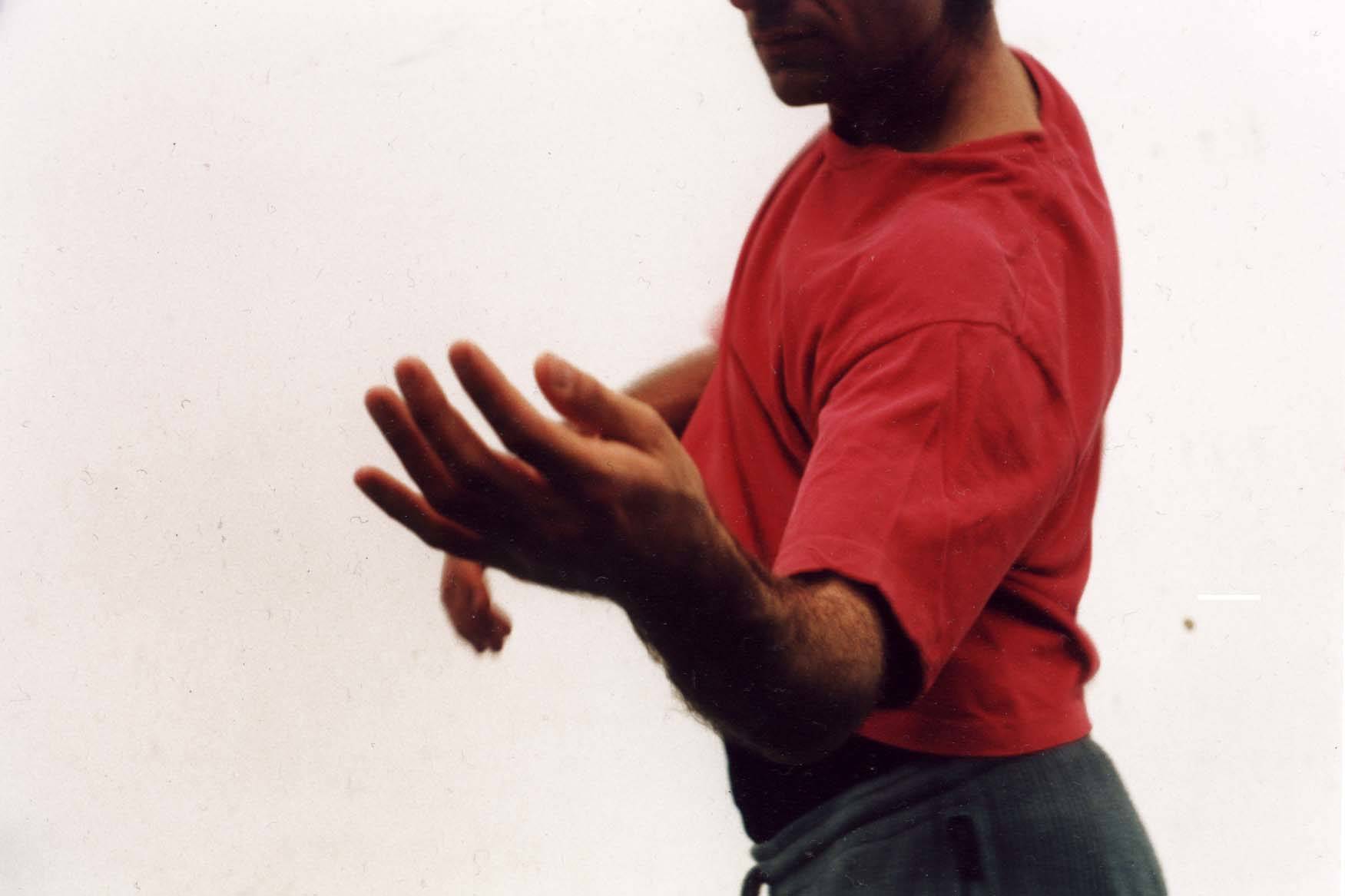PRIX FIXE
On the Boards Studio Theater, 100 West Roy, 217-9888, $12 9 p.m. Thurs., May 2-Sat., May 4
HOLD A LENS UP to human behavior, and we don’t always come off looking too well. In Prix Fixe, directors Peter Kyle and Robyn Hunt show all our foibles and difficulties—sometimes with humor, other times without—from the microscopic denizens of Kyle’s “Skippy-O’s Dream” to the two battling chefs in Hunt’s “Phototrope.”
The lens in Kyle’s work is a literal one, the microscope of 17th-century scientist Sir Robert Hooke, who was the first to use the term “cell” to describe what he saw in his laboratory investigations. As performed by Steve Pearson, Hooke is both bemused by the new worlds he sees under the microscope and frustrated by the world he inhabits himself. He is jealous of his scientific colleagues, referring to “Newton’s vituperative plagiaristic nature,” and fixated on his own reputation. In contrast, the miniature world he observes is inhabited by a pixilated group of “Tinies” who cooperate on seemingly ridiculous activities, marking their places and hiding from the world above. Although Hooke joins in their action occasionally, he spends most of his time watching and commenting, his concern for the “plainness and soundness of observation” winning out over his desire to be a part of the group.
Although the tiny world seems designed to show a humane alternative to Hooke’s disappointing environment, it has its drawbacks as well. The personalities of the Tinies are a bit too self-consciously quirky, rather like a group audition for Cirque du Soleil; their shuffling steps and jerky gestures are straight from a Max Fleischer cartoon, and their black-and-white costumes, complete with old-fashioned driving goggles, reinforce that image. What is meant to be charming winds up close to annoying, like a swarm of gnats you have to walk through. When they break into a big production number, singing and dancing to the Dixieland-style “Hello Central, Give Me Dr. Jazz,” they are almost fatally cute. At times they get free of their Betty Boop-ness, treating each other with tenderness and frustration during a group of duets in which one able-bodied partner has to animate a flaccid one. As the limp dancers continue to flop and droop, their partners’ responses transcend cloying charm, demonstrating a realistic relationship that could actually be an alternative world for its frustrated observer. But in the end the original distinctions return, as Hooke describes his dilemma of being between the microbes and the stars, “Too large to be comprehended, too little to be perceived.” The microscope, the tool that is supposed to connect him to worlds previously unknown, reinforces his isolation instead.
“Phototrope” opens with an argument between two chefs, a French epicurean who describes his work as “neo-primitivist cuisine” influenced by Derrida and a leek-wielding German who simply wants to feed people (“Sie haben hunger”). The piece that follows resembles a buffet of leftovers, with samples from a wild variety of dishes— a little dancing, a little comedy, a little juggling—each of them tasty on its own but confusing all together. The dancing sections are especially weak, relying too heavily on a simplistic step-on-the-beat predictability that slows the pace of the work. Conversely, a beautiful sequence of tossing oranges didn’t last long enough; just as it began to build in tempo and complexity, it ended. The poems interspersed throughout, however, work very well, their completeness and succinctness adding rhythm to the whole. Although it was published in 1999, David Wagoner’s “Plainsong for Everyone Who Was Killed Yesterday” invites the kind of post-Sept. 11 reflection that all art is subject to now. Its reassurance that “You haven’t missed anything yet:/One dawn, one breakfast, and a little weather./ . . . Our humdrum lives/ Have gone on humming and drumming/ Through one more morning” shows the familiarity of repetition to be a virtue in a way that the methodical variety of “Phototrope” does not.








